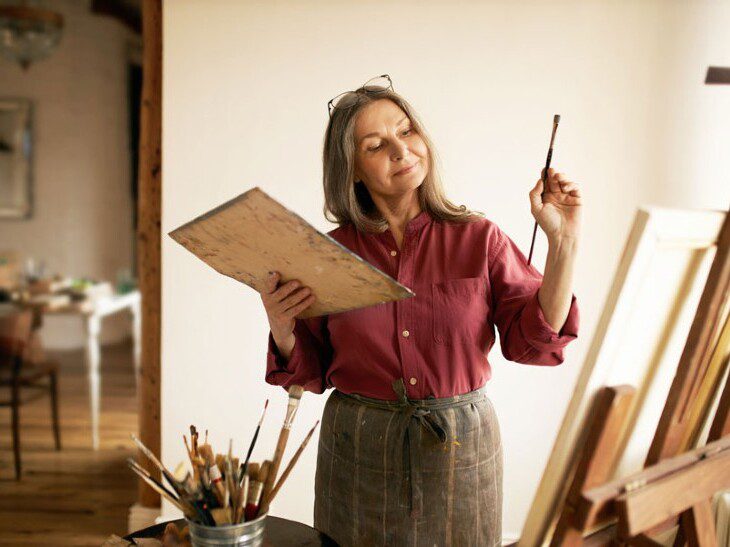It’s not easy getting older. Our bodies don’t seem to cooperate as easily and sadly, even our minds let us down from time to time. But there is a movement afoot that’s working to help seniors express, or even discover, their innate creativity as a means of continued growth and improved quality of life by providing opportunities for meaningful creative expression through visual, literary and performing arts workshops. This movement is called creative aging and it’s rapidly gaining popularity as millions of baby boomers enter their senior years.
Lifetime Arts, a nonprofit organization that seeks to enrich the lives of seniors through arts education defines creative aging as “the practice of engaging older adults (55+) in participatory, professionally run arts programs with a focus on social engagement and skills mastery.”
For a little over 10 years, creative aging proponents have been putting the pieces in place to study and reap the benefits of engaging with the arts while also designing, testing and sharing innovative best practices to help improve the lives of older adults. This positive approach to aging has, not surprisingly, become incredibly popular. Arts programs do wonders to help older adults remain dynamically involved in society. Community-based arts initiatives also give younger generations positive role models who encourage a strong sense of meaning and purpose, making creative aging a good thing for everyone both locally and nationally.

Creativity increases with age.
There are those, like Gene Cohen, author of The Creative Age: Awakening Human Potential in the Second Half of Life who believe that we actually become more creative as we age based on our acquired experiences, wisdom and life relationships. This philosophy supports the practice of creative aging, encouraging older adults to channel their acquired creativity and express it through painting, drawing, acting, music, etc.
Why is creative aging beneficial for seniors?
By incorporating the arts into their lives in an intentional way, seniors can help stave off the effects aging has on the brain. Creative outlets encourage our minds to address problems in new ways and see things from different perspectives. In turn, our thinking stays pliable and flexible as new challenges help us grow intellectually.
But creative aging can also have a big impact on physical health. Studies show that adults 65 and over involved in weekly art programs enjoy fewer doctor visits and less medication than those without such creative outlets. According to Marc Agronin, Ph.D., adult and geriatric psychiatrist for the Miami Jewish Health Systems (MJHS), “There is a growing body of evidence indicating that creative programs for older adults improves the health and wellness of older adults, as well as encourages social connectivity.”
Plus, there’s research indicating that mental activity stimulated by creative activities can be of great benefit to people with Alzheimer’s and other types of dementia, and can help foster connections between those with Alzheimer’s and dementia and their caregivers, whether family or professional.
Creative aging at The Stayton at Museum Way
As the philosophy of creative aging continues to grow in popularity in the United States, so too are the number of senior living communities offering creative aging programs. At The Stayton at Museum Way, we work to help each of our residents employ key components of successful aging including physical, intellectual, spiritual and emotional health. Plus, even with the challenges of our current socially-distanced environment, we continue to seek out ways for residents to spur their creative expression.
If creative aging is something you’ve been looking for in a senior living community, or if it’s a new approach you’d like to learn more about, fill out the contact form below to be contacted by one of our helpful representatives.




